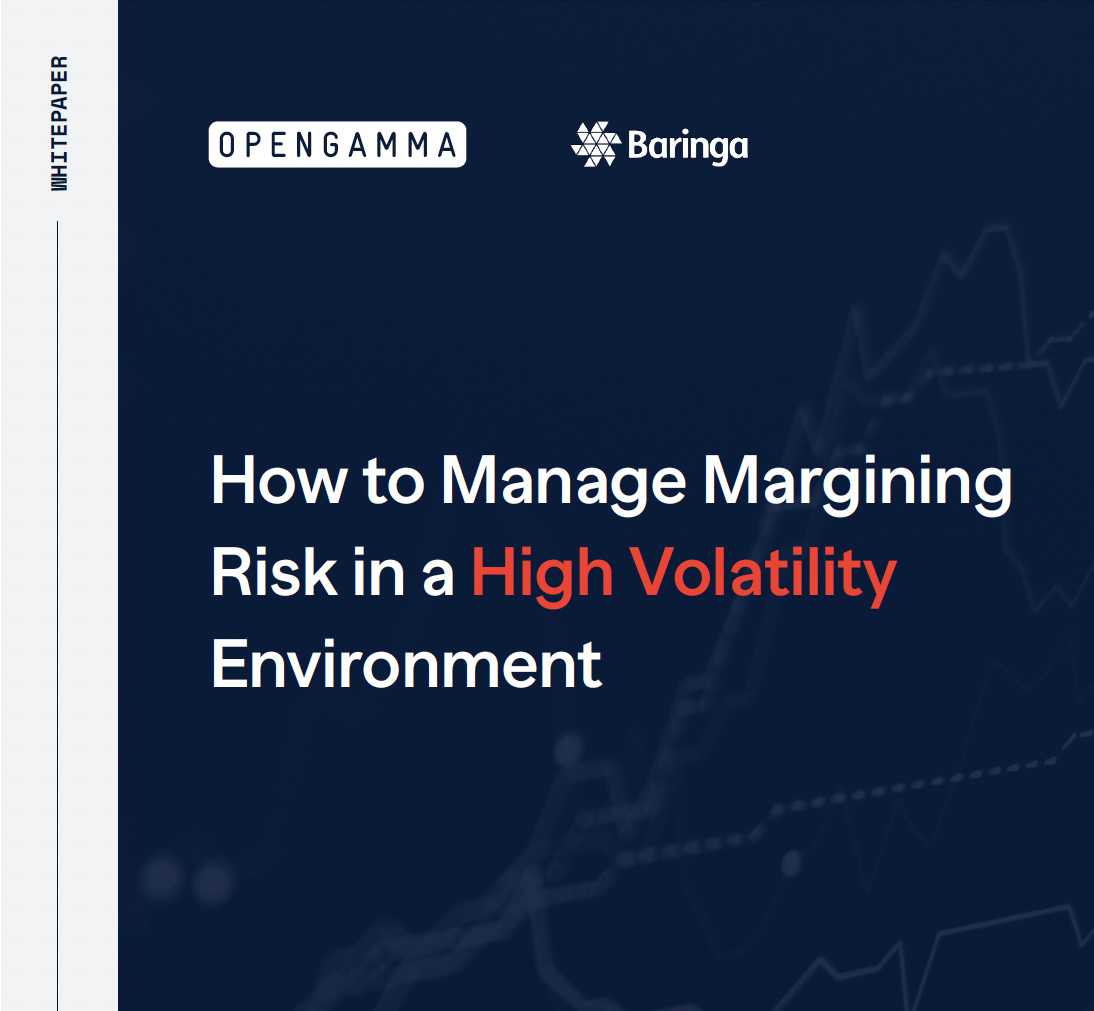Manage Risk Margin In A High Volatility Environment
Over the past few years, trading firms have had to deal with unprecedented volatility, from the effects of Covid-19 to the impact that occurred due to Russia’s invasion of Ukraine. As this volatility becomes the norm, rather than the exception, Baringa and OpenGamma explore how trading firms can reorganise themselves to conduct better margin risk management in this new environment.
In our Ebook we explore the integration of margin costs into risk management and financial forecasting. Additionally, we also look at considering margining and financial liquidity risks in commercial and trading decisions. Lastly, in our Ebook we explore the technological capabilities required to implement the framework and operating model.
Volatility Induced Liquidity Stress
Traders are always prepared for volatility, however rippling effects of increased volatility have caught many trading companies off guard. We take a look at how this level of increased volatility affects initial margin rates. We also look at the issue of cash-flow volatility and how the combination of a high flat price environment with extreme price volatility, can lead to huge margin calls and firms going into an emergency response.
Why Firms Need To Reorganise Themselves Up To Deal With Volatility
As we are moving beyond the initial phase of panic and emergency response, it would be wise to have a look at how firms can organise themselves in such a way that they are better placed to deal with similar situations. Businesses need to find a way to accept a high margin environment as the “new normal” and position themselves in a way that allows them to thrive in this new climate. In the following chapters we list four considerations that you can use in order to thrive in the next normal.
Setting Yourself Up For Success – 4 Considerations To Thrive In The Next Normal
1. Establishing Transparency
For the first step we suggest establishing transparency when it comes to the projected margining cash flows of the business. Additionally, an understanding of both initial margin and variation margin payments should be created.
2. Building A Robust Liquidity Risk Management Framework
A liquidity risk management framework should include an updated governance model that allows for a clear mandate to monitor, steer and manage liquidity risk in the context of the existing risk frameworks, thereby creating the ‘Devil’s Triangle’ of market risk, credit risk and liquidity risk.
3. Building An Operating Model That Is Fit For Purpose In A Volatile Environment
For any organisation to benefit from a liquidity risk management framework, it’s vital that its risk management operating model is fit for purpose.
4. Assessing Technology You Need To Succeed
When considering the technology used by commodity trading firms, there are significant gaps in existing systems that have been exposed by new approaches to liquidity risk management. Energy trade and risk management systems don’t provide the ability to model or manage derivatives margin effectively. We provide considerations and ideas to solve this issue.
The Time To Act Is Now
In the last chapter, we emphasise that though a firm may have successfully weathered the liquidity and margining storm to some degree, there is no room for complacency. This is because it’s clear that in an environment of increased capital restraints, higher interest rates and greater market volatility there is a strong case for margin and liquidity risk management solutions. However, making this a reality in trading organisations is not straightforward.
Download Our Ebook For Better Margin Risk Management
This blog is just a small glimpse into our Ebook. Our Ebook provides a comprehensive guide on how trading firms can reorganise themselves for better margin risk management in a high volatility environment. Furthermore, we also provide margin risk management solutions so that commodity trading firms can be prepared for future volatility.
Moreover, we invite you to delve into our collection of Ebooks, such as our “Margin Management Best Practices” Ebook. Additionally, explore a wide selection of blogs on our insights page. Lastly, learn more about OpenGamma by watching our demo and taking a look at our product and solutions pages.

